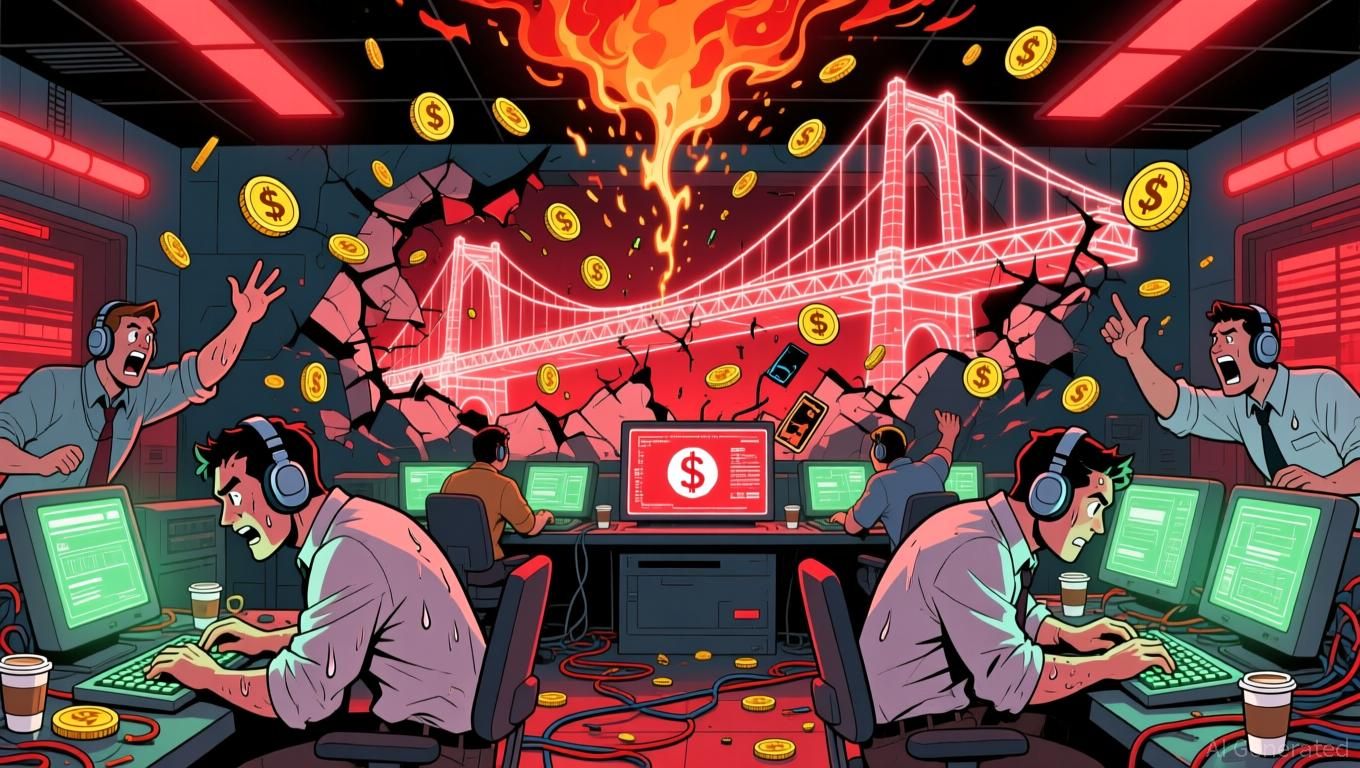Fed's Balancing Act: 3% Inflation, Tariff Challenges, and Political Calls for Lower Rates
- US inflation hit 3% in September 2025, slightly above the Fed's 2% target but below forecasts, driven by Trump-era tariffs and supply chain adjustments. - Tariffs on Chinese goods, steel, and energy raised household costs by $1,800 annually, while Canada faced 2.4% inflation amid stalled US-Canada trade negotiations. - The Fed faces political pressure to cut rates despite persistent core inflation at 3.1%, balancing recession risks against inflation control. - Markets reacted cautiously to inflation data
In September 2025, inflation in the United States reached 3%, slightly exceeding the Federal Reserve’s 2% goal but coming in below what many economists had anticipated. This outcome was shaped by the ongoing effects of tariffs and shifting supply chains, which helped moderate expectations for a more significant increase. The Bureau of Labor Statistics, whose release was postponed by a 24-day government shutdown, reported that consumer prices rose 3% compared to the previous year, with a monthly increase of 0.3%, as
Trump’s assertive use of tariffs to reshape trade has led to increased expenses for both consumers and businesses. The administration’s 155% tariffs on Chinese imports, along with targeted duties on steel, aluminum, and energy, have driven up costs across multiple sectors, a

Canada, a major US trading partner, has also faced inflationary challenges, with its annual consumer price index rising to 2.4% in September, mainly due to higher food and housing costs,
Meanwhile, the Federal Reserve is facing mounting pressure from the White House to reduce interest rates, even though inflation remains above its target. Chair Jerome Powell has indicated a likely 25-basis-point cut at the next policy meeting, citing sluggish job growth and broader economic risks, as reported by Business Standard. The central bank is grappling with the challenge of curbing inflation while trying to avoid triggering a recession. Core inflation, which excludes the more volatile food and energy categories, held steady at 3.1% for the third month in a row, highlighting ongoing price pressures, The Guardian also reported.
Financial markets have responded with caution to the latest inflation figures. The Dow Jones outperformed other major indices as investors anticipated a rate cut, while Netflix shares dropped 6% after falling short of earnings projections. Energy firms, such as Western Energy Services Corp., posted weaker results due to falling oil prices, which have been affected by tariff uncertainty and geopolitical issues, according to a
Disputes over tariffs continue to fuel political tensions. Trump has refused to negotiate with Democrats until the government is reopened and has threatened further tariffs on Nicaragua and other nations, as reported by
Disclaimer: The content of this article solely reflects the author's opinion and does not represent the platform in any capacity. This article is not intended to serve as a reference for making investment decisions.
You may also like
Silver Soars Amid Ideal Conditions of Policy Shifts and Tightening Supply
- Silver surged to $52.37/oz as Fed rate cut expectations (80% probability) and falling U.S. Treasury yields boosted demand for non-yielding assets. - China's record 660-ton silver exports and 2015-low Shanghai warehouse inventories intensified global supply constraints, pushing the market into backwardation. - Geopolitical risks (Ukraine war) and potential U.S. silver tariffs added volatility, while improved U.S.-China relations eased short-term trade concerns. - Prices face critical $52.50 resistance; Fe
XRP News Today: As XRP Declines, Retail Investors Turn to GeeFi's Practical Uses
- GeeFi's presale hits 80% of Phase 1 goal with $350K raised, targeting 3,900% price growth as XRP declines 20% monthly. - GEE's utility-driven features like crypto cards, multi-chain support, and 55% staking returns contrast with XRP's institutional dependency and shrinking retail base. - Deflationary tokenomics and 5% referral bonuses drive FOMO, positioning GeeFi as a 2026 crypto disruptor amid XRP's regulatory and adoption challenges.

Sloppy implementation derails MegaETH's billion-dollar stablecoin aspirations
- MegaETH abandoned its $1B USDm stablecoin pre-deposit plan after technical failures disrupted the launch, freezing deposits at $500M and issuing refunds. - A misconfigured Safe multisig transaction allowed early deposits, causing $400M inflows before the team scrapped the target, citing "sloppy execution" and operational misalignment. - Critics highlighted governance flaws, uneven access (79 wallets >$1M vs. 2,643 <$5K deposits), and 259 duplicate addresses, raising concerns about transparency and bot ac

XRP News Today: Institutional ETFs Drive XRP's Phase 4 Surge, Targeting a Break Above $2.60
- XRP enters Phase 4 of its multi-year cycle, mirroring 2014–2017 patterns with $2.00 retest and $6.618 target potential. - Six new XRP ETFs (Franklin Templeton, Grayscale) boost institutional demand, though performance varies significantly between products. - Technical analysis highlights $2.05–$2.07 support and $2.20 resistance, with $2.60 breakout critical for confirming Phase 4 bullish thesis. - Macroeconomic factors like Fed rate cuts and improved U.S.-China relations could reduce risk aversion, ampli
